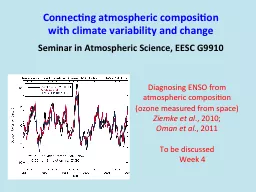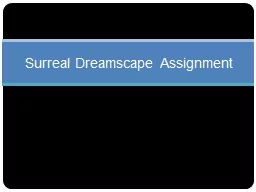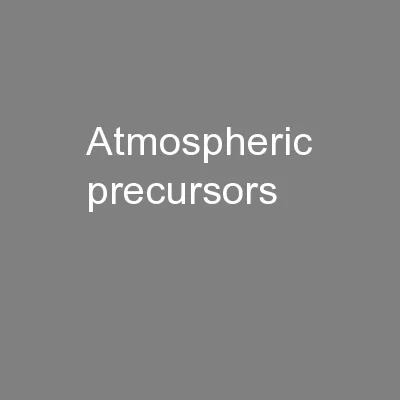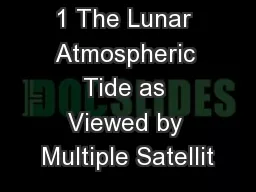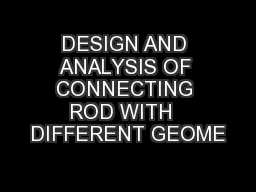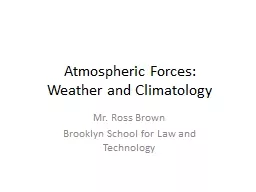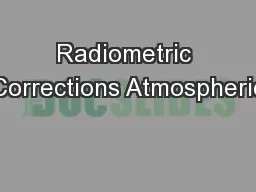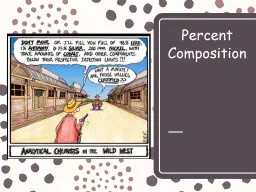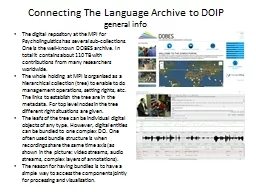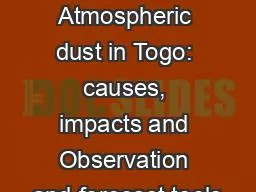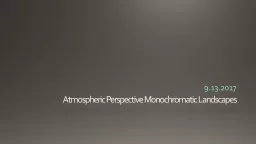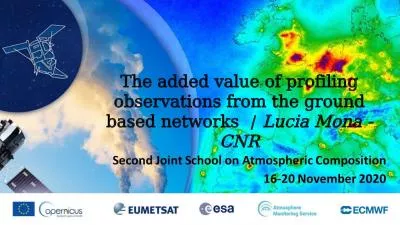PPT-Connecting atmospheric composition
Author : jane-oiler | Published Date : 2015-10-22
with climate variability and change Seminar in Atmospheric Science EESC G9910 Diagnosing ENSO from atmospheric composition ozone measured from space Ziemke et
Presentation Embed Code
Download Presentation
Download Presentation The PPT/PDF document "Connecting atmospheric composition" is the property of its rightful owner. Permission is granted to download and print the materials on this website for personal, non-commercial use only, and to display it on your personal computer provided you do not modify the materials and that you retain all copyright notices contained in the materials. By downloading content from our website, you accept the terms of this agreement.
Connecting atmospheric composition: Transcript
Download Rules Of Document
"Connecting atmospheric composition"The content belongs to its owner. You may download and print it for personal use, without modification, and keep all copyright notices. By downloading, you agree to these terms.
Related Documents

